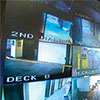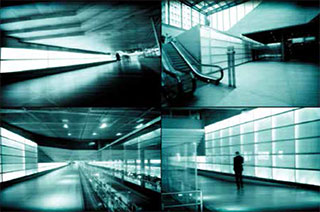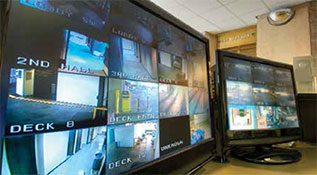
Technology Advancement
Administrator has capability to monitor, analyze and troubleshoot
- By Joseph Goudlock
- Mar 01, 2013
 Although many current security systems rely on personnel monitoring video, physical alarm activation and manual response relays, a budding interoperable suite of technologies has stepped into the arena of security products—a system is sometimes known as remote network monitoring (RMON).
Although many current security systems rely on personnel monitoring video, physical alarm activation and manual response relays, a budding interoperable suite of technologies has stepped into the arena of security products—a system is sometimes known as remote network monitoring (RMON).
RMON provides its administrator the capability to monitor, analyze and troubleshoot a multitude of security threats from a distance. Keywords: from a distance— what’s the point of security if you have to put yourself in harm’s way?
Fortunately, security product manufacturers have worked to address this conundrum by developing a remote solution. As the name implies, remote monitoring systems allow the operator to operate safely when confronting an intruder. A large amount of commercialization surrounding these systems started with domestic disturbance response teams, but remote monitoring systems have increased their popularity through commercialized vendors that couple cable, Internet and phone bundles as an aggregated set-up. They are full-service security design and integrators, if you will.
Specifically addressing the security industry in this feature, remote monitoring technology is what we believe to be a star product—a budding invention that is increasing in market share and at the same time holds a wealth of potential for market growth. Simply put, if you are a manufacturer of security products or a representative thereof, you will want to be on the lookout for remote monitoring as a common integration in future security systems.
The relevance of this continued development created a major focus in the security products and integrated technologies industries. One solution to come from this is the connection of multi-tiered video monitoring systems with sound-activated alarming RMONs. For example, a five-story parking garage, eight valet parkers assigned a set section of operation, one cashier, a central command center with 23 video monitoring screens for two security officials to watch, and possibly, a patrol unit for all parking levels.
Given today’s economy, that type of staffing is quite common-place, but may not be sufficient. This is why security professionals are called in to support physical security systems. Even with a multi-zone video monitoring system, it’s quite hard to diligently monitor multiple security zones without obvious notifications. A car alarm though, picked up by the strategically valued placement of an audio monitoring device linked to a RMON, would provide an integrated security solution and the opportunity for a safe response. In alarm mode, an audio monitoring device would activate an IP network system and the zone it’s linked to, drawing proper attention to an area of alarm or distressful situation. Additionally, network- based, audio remote monitoring systems act as a second-response device, which satisfies local law enforcement requirements to investigate a location without the need for physical confirmation.
Intrusion, SHRINK (inventory loss prevention), and most of all endangered security staff are just a few of the reductions you will notice when integrating and upgrading a customer’s security system to value a remote monitoring facility.
Before getting started, it is important to recognize that a remote monitoring system connects to a management information base (MIB), is the source of most network security systems and links to asset protection and retrieval. The management of this security system, whether commercial or residential, can become quite complicated with the introduction of multi-zone monitoring. Subsequently, the actual monitoring of a security network may not be so simple; this makes the costanalysis of an asset protection system a multi-tiered practice. A final point to take into account is that there are two types of remote monitoring systems, referred to as RMON1 and RMON2.
RMON1 MIB, a remote monitoring system for a security system’s management information base, consists of 10 groups. RMON1’s focuses is on alarms set to defined thresholds, real-time LAN statistics, and even alerts simple network management protocol (SNMP) for the aforementioned alarm focuses. We’re talking perimeter security. A RMON2 MIB system adds 10 more groups to remote monitoring security technologies that generally consist of protocol directories and network hosts. In fact, you may be interested in further researching “RMON2 MIB Probe Specifications.”
Remote monitoring system software agents technically, and most specifically, gather visual information to present a security administrator. But, they can be implemented in a variety of ways to make situations, such as perimeter security and access control, more efficient. IP network video security systems, easily complimented by compatible audio monitoring microphones, are excellent for intrusion detection, and subsequently finds RMONs commonplace in requests for comments amongst the Internet Engineering Task Force (IETF).
Let’s address the legality of that audio integration with a remote monitoring system. Although states hold their own individual laws, they are compatible with the federal statutes that require the removal of the expectation of privacy. Just as there are signage notifications of “Video Monitoring on These Premises,” a simply visible signage of “Audio Monitoring on These Premises,” gives a security operator the legality to manage the safety and security of the assets and activities in the vicinity of audio monitoring deployment.
The reasoning behind doing this is simple—the quicker you can respond to a problem, the quicker it can be solved. We have observed a recent increase in the use of remote monitoring systems and have drawn the conclusion that it can be attributed to the specificity remote monitoring provides for un-manned security networks, multi-zone security management, and safety protocols.
 There are a vast array of security product suppliers you’ll find moving into this market, and as technology advances, so does safety. What retains remote monitoring as a market driver in the world of security products is the need for that safety— a need for protection that doesn’t sacrifice the safety of a single individual. You can even link your RMON with a two-way audio monitoring system to speak to a potential violator of safety and securities, making it known that they are being caught visually and audibly on camera. Also, an operator can take comfort in knowing that the “secondary verification” from their remote monitoring device just notified the authorities of their whereabouts.
There are a vast array of security product suppliers you’ll find moving into this market, and as technology advances, so does safety. What retains remote monitoring as a market driver in the world of security products is the need for that safety— a need for protection that doesn’t sacrifice the safety of a single individual. You can even link your RMON with a two-way audio monitoring system to speak to a potential violator of safety and securities, making it known that they are being caught visually and audibly on camera. Also, an operator can take comfort in knowing that the “secondary verification” from their remote monitoring device just notified the authorities of their whereabouts.
Plus, you don’t have to sacrifice financial resources. Instead of elaborating on the impact a decrease in security staff requirements and a non-recurring capital investment in the integration of a remote monitoring security camera with an automated audio alarming response system would deliver in a commercial environment, focus on a unique benefit provided by integrating remote monitoring with your MIB. Connecting a RMON via a PoE, connection. A PoE connection passes electrical power, safely, along with the data transfer from your remote monitoring system, to your MIB. The connection works between power-requiring devices and the security management system (SMS). The power transfer of a PoE system is modest, delivering12 watts to support the VMS and AMS of your remote monitoring system.
While a PoE system has a reach of 100 meters (330 feet), the distance won’t be much of a factor. Now that the security product manufacturer’s market has caught wind of the popularity and deployment potential behind remote monitoring systems, the technological advances have begun.
Wireless integration, connected and inter-operating with both commercial and residential remote monitoring devices, offers placements where cables are not even feasible. Connecting security monitoring devices where best positioned, you can now take advantage of how Wi-Fi data acquisition (DAQ) benefits your security strategy. The implementation of Wi-Fi DAQ with remote monitoring systems allows the operator to access data and/or be informed of situations via most Webenabled devices. This works hand-in-hand with issues such as perimeter security. Using remote monitoring systems, security or managerial staff can implement an access control system by linking a wireless remote monitoring system to unmanned entrances, or areas that require more sensitive approaches like power transmission and distribution facilities. Today, real-time control of your environment can mean the difference between an incidental loss and a conviction. If you prefer a more direct connection to your security network, Ethernet cables connecting your RMON to your control center can allow for the control of data, for example, over a secure IP network.
A remote monitoring device is designed for enhancing integrated security systems; the RMON’s typically operate in a client/server model relation, and can be linked to device-based management. An advantage of these systems is that remote devices can shoulder the management of your information acquisition, and can be paired with audio devices, network cameras and home security systems. Contact a local vendor today to see the cost-analysis of your asset protection by implementing a multi-tiered remote monitoring security system.
This article originally appeared in the March 2013 issue of Security Today.